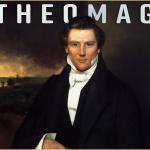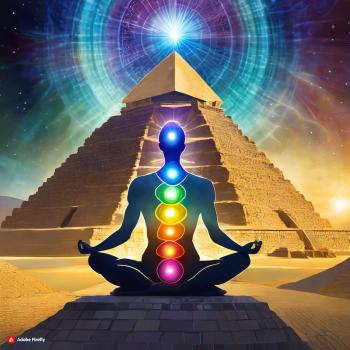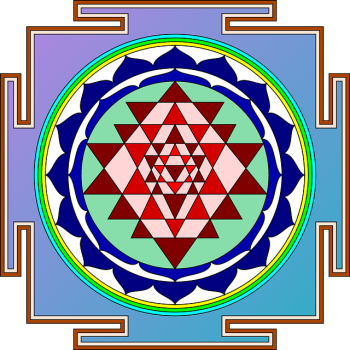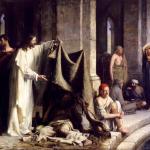This is the second article in my series on sacred geometry. As discussed in the previous work, sacred geometry has been revered for thousands of years and across many spiritual traditions. From the intricate designs of ancient Egyptian temples to the fundamental shapes of modern science, sacred geometry holds a mirror to the inherent order and harmony of the cosmos. As a lover of history I knew a lot of this, but it wasn’t until I jumped down the geometric rabbit hole that I realized this ancient practice not only offers profound insights into the nature of existence, but also serves as a powerful tool for meditation and spiritual growth.
The Ancient Mystery Schools
Ancient mystery schools, particularly those of Egypt, Greece and India, held sacred geometry as an integral part of their teachings. In these schools, geometry was a sacred science that revealed the hidden order of the cosmos. The Egyptians, for example, incorporated sacred geometric principles into the construction of their temples and pyramids, believing that these shapes and sacred angles could harness cosmic energies and facilitate spiritual transformation.
The Great Pyramid of Giza, with its precise geometric proportions and alignment with celestial bodies such as Orion, was actually a mystery school where initiates were taught this practice, among others. In fact, many researchers have proposed that Jesus studied in the Egyptian mystery schools when the Holy Family fled to Egypt following King Herod’s decree that all children 2 and under who live near Bethlehem were to be killed.
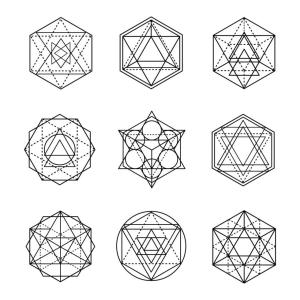
“Let no one ignorant of geometry enter here,” was inscribed above the entrance of Plato’s mystery school in Greece. The philosopher Pythagoras and his mystery school deeply explored the mystical dimensions of geometry. Pythagoras and his followers believed that numbers and geometric forms were the fundamental building blocks of reality and creation. Sacred geometry was called the language of God by these ancients. They taught that understanding these geometric relationships brought one closer to the Creator. The Pythagoreans held that certain shapes, such as the circle, triangle, and square, contained intrinsic properties that could influence physical and spiritual realms. Through their studies, they discovered mathematical harmonies and ratios that they believed were reflections of the cosmic order, integrating these insights into their philosophical and spiritual practices.
In ancient India, sacred geometry played a crucial role in spiritual practices, art, and architecture. Intricate designs of mandalas, geometric representations of the universe, were used extensively in meditation and rituals. These patterns, composed of circles, squares, and triangles, helped practitioners focus their minds and connect with higher states of consciousness. Indian temples, such as the Khajuraho Group of Monuments and the Brihadeeswarar Temple, exhibit the use of sacred geometry in their meticulous design, aligning with cosmic principles to channel divine energy and promote spiritual harmony.
The Sri Yantra, a well-known example of sacred geometry in India, consists of nine interlocking triangles creating a pattern of 43 smaller triangles. This powerful symbol is used in meditation and rituals to invoke goddess energy and attain spiritual enlightenment, balancing the energies within the practitioner and aiding in the realization of one’s inner divinity and connection to universal consciousness. Representations of the yantra in India have been considered to date back to 11,000–10,000 years BCE. The Baghor stone, found in an upper-paleolithic site in the Son River valley, is considered the earliest example.
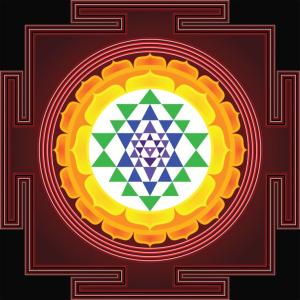
The use of sacred geometry in these ancient mystery schools extended beyond theoretical study and were applied in ritualistic and architectural contexts within these centers of learning. The teachings of sacred geometry were closely guarded, imparted only to those deemed worthy of its knowledge. This esoteric wisdom was seen as a pathway to enlightenment, providing initiates with a deeper understanding of the universe and their place within it. The legacy of these ancient mystery schools continues to inspire contemporary seekers of spiritual knowledge, reflecting the timeless nature of sacred geometry.
Modern Advocates of Sacred Geometry
Today, the study and application of sacred geometry continues through the work of modern advocates like Robert Edward Grant and Robert Gilbert, PhD. These contemporary thinkers have brought new insights and applications to this ancient wisdom.
Robert Edward Grant is a polymath and a visionary whose work spans the fields of mathematics, art, music, and philosophy. In his courses taught through his website, Grant explores how sacred geometry is not just an abstract concept but a practical tool for understanding the universe and our place within it. He emphasizes the importance of these geometric principles in various fields, including architecture, art, and science, demonstrating their relevance in both ancient and modern contexts. I particularly identify with Grant as he also has a background in Mormonism similar to myself.
As a spiritual practice, he teaches that when meditating with sacred geometric patterns, such as the Flower of Life, the Sri Yantra, or Metatron’s Cube, practitioners can connect with the deeper, universal rhythms and structures that these symbols represent. The intricate patterns of sacred geometry can help quiet the mind by drawing it away from the chaotic, linear thought processes and into a more holistic, expansive state of awareness. Grant also advocates for the hand-drawing of these sacred shapes which can lead to greater insights, heightened intuition, and a sense of interconnectedness with all life.
Robert Gilbert, through his organization Vesica Institute, offers extensive courses and resources on sacred geometry and its applications in spiritual development and etheric healing. Vesica provides a wealth of information on how these geometric principles can be used to enhance meditation, personal growth, and holistic health.
Dr. Gilbert’s work also explores how the Rosicrucians, a mystical order that emerged in Europe during the early 17th century, utilized sacred geometry as a cornerstone of their spiritual practices and philosophical teachings. According to Dr. Gilbert, the Rosicrucians believed that sacred geometry was a divine language that could reveal the hidden laws of nature and the universe. These European mystics incorporated geometric principles into their symbolic representations, architectural designs, and esoteric rituals to align themselves with cosmic energies and divine wisdom.
What I personally love about Dr. Gilbert is his ability to bring multiple spiritual streams into one river. This speaks to my own eclectic orientation to spirituality, and I continue to devour his courses offered through Vesica.

The Universal Language of Geometry
The enduring appeal of sacred geometry lies in its ability to bridge the gap between the material and the spiritual, the scientific and the mystical. Whether through the meditative focus on a mandala, the philosophical insights of the Pythagoreans, or the contemporary teachings of modern advocates, sacred geometry offers a universal language that transcends time and culture.
By engaging with these timeless patterns, individuals can gain a deeper understanding of the interconnectedness of all things, finding harmony within themselves and the world around them. Sacred geometry is more than a subject of study; it is a path to enlightenment, a tool for personal transformation, and a key to unlocking the mysteries of the universe.


